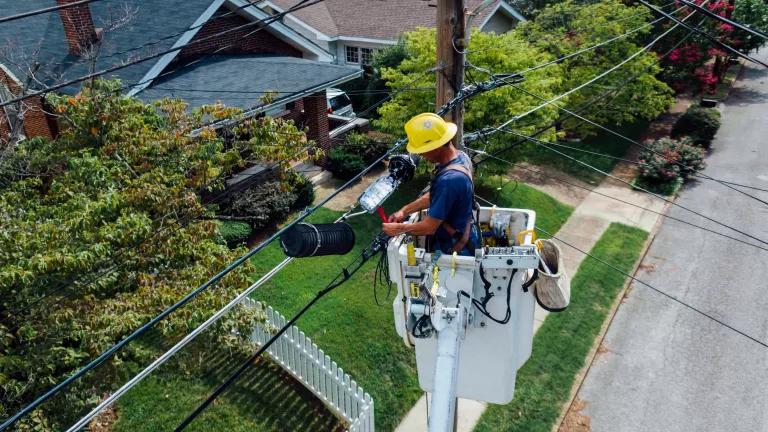Chicago Skyline Getting Greener

Chicago’s buildings are saving energy and money as part of their continued commitment to the Retrofit Chicago Energy Challenge—and the program is about to get a little bit bigger. In 2012, Mayor Emmanuel launched the Retrofit Chicago, and earlier this month announced the third expansion of the program with 62 participating buildings and over 43 million square feet committed to reducing energy use 20 percent within five years, making Retrofit Chicago one of the largest voluntary energy efficiency programs in the country. The program will grow to 80 participating buildings within the next year.
Not only is the program gaining momentum, but it’s seeing real success in the buildings that are already participating. Through 2015—just three years into the program—participating buildings have reduced weather-normalized energy use by 11.7 percent, saving the properties a collective $6.4 million annually. The energy saved to date is over 90 million kWh, which is enough energy to power more than 8,000 homes for a year. These energy savings have a positive impact on our climate, too, by reducing the collective greenhouse gas emissions of the buildings by over 70,000 metric tons—equivalent to taking more than 14,000 cars off the road.
NRDC has supported many buildings participating in the Retrofit Chicago Energy Challenge for several years with both technical and strategic assistance. On the ground, we have seen that the buildings are achieving energy savings through a combination of capital upgrades and operational improvements in the base building systems and tenant-occupied spaces. This means building engineers and property managers are identifying opportunities to run equipment smarter and reduce energy waste. They’re also working with asset managers and executives to make investments in newer, more efficient technologies that allow buildings to operate better, like lighting upgrades and HVAC controls. The most successful buildings don’t just let improvements stop in the mechanical room—they work to educate tenants and visitors to the building about the importance of energy efficiency and ways they can help, such as shutting down computer equipment at night and using natural daylight when possible. A building’s performance is a reflection of its operators and occupants, so an all-inclusive approach to energy efficiency is the best way to achieve deep energy savings.
Furthermore, the benefits of the Retrofit Chicago Energy Challenge successes go beyond the borders of the Windy City. Through its participation in the City Energy Project, the team in Chicago is able to share best practices and lessons learned with a network of other leading cities across the U.S. that are also working to increase energy efficiency in local buildings.



